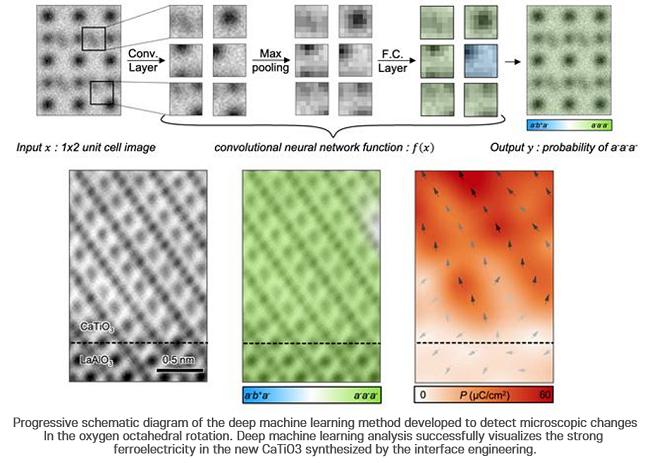
Credit: Si-Young Choi (POSTECH)
There is an old saying, “If rubber is the material that opened the way to the ground, aluminum is the one that opened the way to the sky.” New materials were always discovered at each turning point that changed human history. Materials used in memory devices are also drastically evolving with the emergence of new materials such as doped silicon materials, resistance changing materials, and materials that spontaneously magnetize and polarize. How are these new materials made? A research team from POSTECH has revealed the mechanism behind making materials used in new memory devices by using artificial intelligence.
The research team led by Professor Si-Young Choi of Department of Materials Science and Engineering and the team led by Professor Daesu Lee of the Department of Physics at POSTECH have together succeeded in synthesizing a novel substance that produces electricity by causing polarization (a phenomenon in which the position of negative and positive charges is separated from the negative and positive charges within the crystal) at room temperature and confirmed its variation in the crystal structure by applying deep neural network analysis. This paper was published in the recent issue of Nature Communications.
The atomic structures of perovskite oxides are often distorted and their properties are determined by the oxygen octahedral rotation (OOR) accordingly. In fact, there are only a few stable OOR patterns present at equilibrium and this inevitably limits the properties and functions of perovskite oxides.
The joint research team focused on a perovskite oxide called CaTiO3 which remains nonpolar (or paraelectric) even at the absolute temperature of 0K. Based on the ab-initio calculations, however, the team found that a unique OOR pattern that does not naturally exist would be able to facilitate the ferroelectricity, a powerful polarization at room temperature.
In this light, the research team succeeded in synthesizing a novel material (heteroepitaxial CaTiO3) that possesses the ferroelectricity by applying interface engineering that controls the atomic structures at the interface and accordingly its physical property.
In addition, deep neural network analysis was applied to examine the fine OOR and the variation of a few decades of picometer in the atomic structures, and various atomic structures were simulated and data were utilized for AI analysis to identify artificially controlled OOR patterns.
“We have confirmed that we can create new physical phenomena that do not naturally occur by obtaining the unique OOR pattern through controlling the variation in its atomic structure,” remarked Professor Daesu Lee. “It is especially significant to see that the results of the convergent research of physics and new materials engineering enable calculations for material design, synthesis of novel materials, and analysis to understand new phenomena.”
Professor Si-Young Choi explained, “By applying the deep machine learning to materials research, we have successfully identified atomic-scale variations on tens of picometers that are difficult to identify with the human eye.” He added, “It could be an advanced approach for materials analysis that can help to understand the mechanism for creating new materials with unique physical phenomena.”
###
The findings are the result of convergence research conducted by the Department of Physics and the Department of Materials Science and Engineering at POSTECH and Seoul National University’s Center for Correlated Electron Systems. It was conducted with the support from the Mid-career Researcher Program and the Global Frontier Hybrid Interface Materials Program of the National Research Foundation of Korea and the POSTECH-Samsung Electronics Industry-Academia Cooperative Research Center.
Media Contact
Jinyoung Huh
[email protected]
Original Source
http://postech.
Related Journal Article
http://dx.




